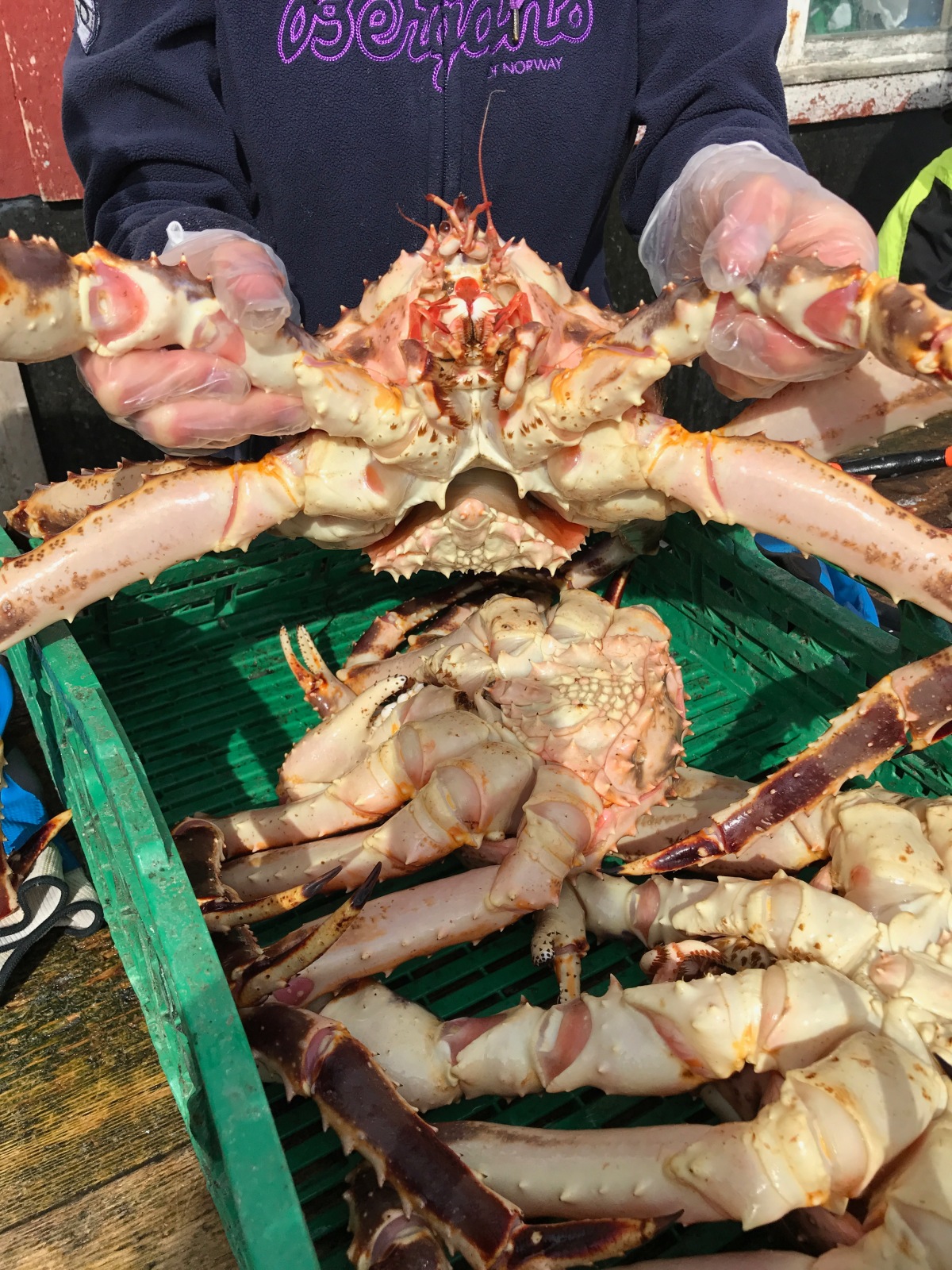“I’ll have the crab legs.”
This is another restaurant order that elicits envious ooohs and aaahs from your surrounding companions despite the fact it means that in 20 minutes you will likely be wearing a bib as you barbarically snap and crack your meal apart. A serving of crab legs out will usually set you back $25-$50 (unless you enjoy an all you can eat china buffet), making it far from a frugal find, but does it have the same rags to riches tale as our friend the lobster?
Let’s dive into the History of the Red King Crab. Specifically, the variety found off the coast of Norway.

Three years ago as I was sailing around Norway onboard the Konigsdam as a dancer I had the chance to get up close and personal with these behemoths on a “King Crab Safari” out of the port of Honningsvag.
The Red King Crab is native to the Northern Pacific Ocean, but it was introduced to the Barents Sea in the 1960s by Russian scientists seeking to create sustainable fishing. These new invaders ran amok through the waters, eating and crushing everything in their paths as they spread throughout the Baltic.
Unlike lobster, crab jumped straight to the top of the socioeconomic ladder as people sought after the delicious, buttery, slightly sweet meat. So while invasive, the profit opportunities outweighed the cons of a ravaged ecosystem. My tour guide added the fact that fisherman used natural selection to breed bigger, badder crabs by catching the beasts, flipping them onto their backs, and only hauling up the ones too weak to flip themselves over. (Mind you, I couldn’t find online resources to confirm or deny this, but it makes logical sense).
The result? Huge crustaceans that can weight nearly 20lbs with a leg span of 6 feet.

My tour involved a speed boat ride along the coast of Norway to a crab farm where we got to help haul up a trap and see the creatures for ourselves. While there were not any 6ft monsters, they were certainly the largest crabs I have ever seen. Once we got to the shore, a young, blonde, angelic-looking Norwegian girl demonstrated the process of killing the crab. She savagely stabbed a pick axe into the brain, avoiding the claws that were wailing around for 15 seconds, then ripped off the legs and shucked away the body as guts and fluids poured over the table.
Many onlookers couldn’t handle the gore, and looked away exclaiming, “I don’t want to see that!!!” One particular guest explained she was a vegetarian as she huffed away in disgust, and I gave her a sympathetic half smile given the fact I was technically working, although I wanted to say, “….ma’am… you signed up for a Crab hunting tour…..”
I was personally up and center.
Which should come at no surprise if you’ve read the 5 strangest things I’ve ever eaten.
I firmly believe that if you eat an animal, you should be able to watch its physical journey from farm (or ocean) to table. In many cultures, freshly slaughtered animals are the norm, and you can get your dinner’s feast beheaded and chopped up right in front of you. Seeing the process not only ensures freshness, but gives a sense of honor and respect to the life source that’s about to help sustain your own life. Such practices are atypical in the United States unless you work on a farm, and there is a general out of sight out of mind approach to the food we eat.
Just because you don’t see the cow die doesn’t mean your burger wasn’t once happily grazing around in a field (or tortured in a pen… sorry, but it’s true!) If seeing an animal die makes you uneasy as waves of compassion flood through your system, consider a vegan diet (sorry vegetarians, those eggs and that milk probably don’t come from happy animals).
If you even feel up and arms and slightly offended at the last two paragraphs, again, I’d recommend changing up your diet.
An hour or so later we finally got to feast on the massive crab legs, and let me tell you, they were nothing short of spectacular. The juicy, tender meat melted in my mouth with a soft sweetness that has me salivating just thinking about it.
Lobster and crab both sit at the elite culinary table, and while lobster clawed it’s way up there, the Red King Crab has been sitting easy for decades. And I do have to say, it deserves that top spot.


2 thoughts on “Why So Crabby?: A Look Into the Red King Crab”
Love crab.
that thing is terrifying!!!!! Im just glad it didnt eat YOU!